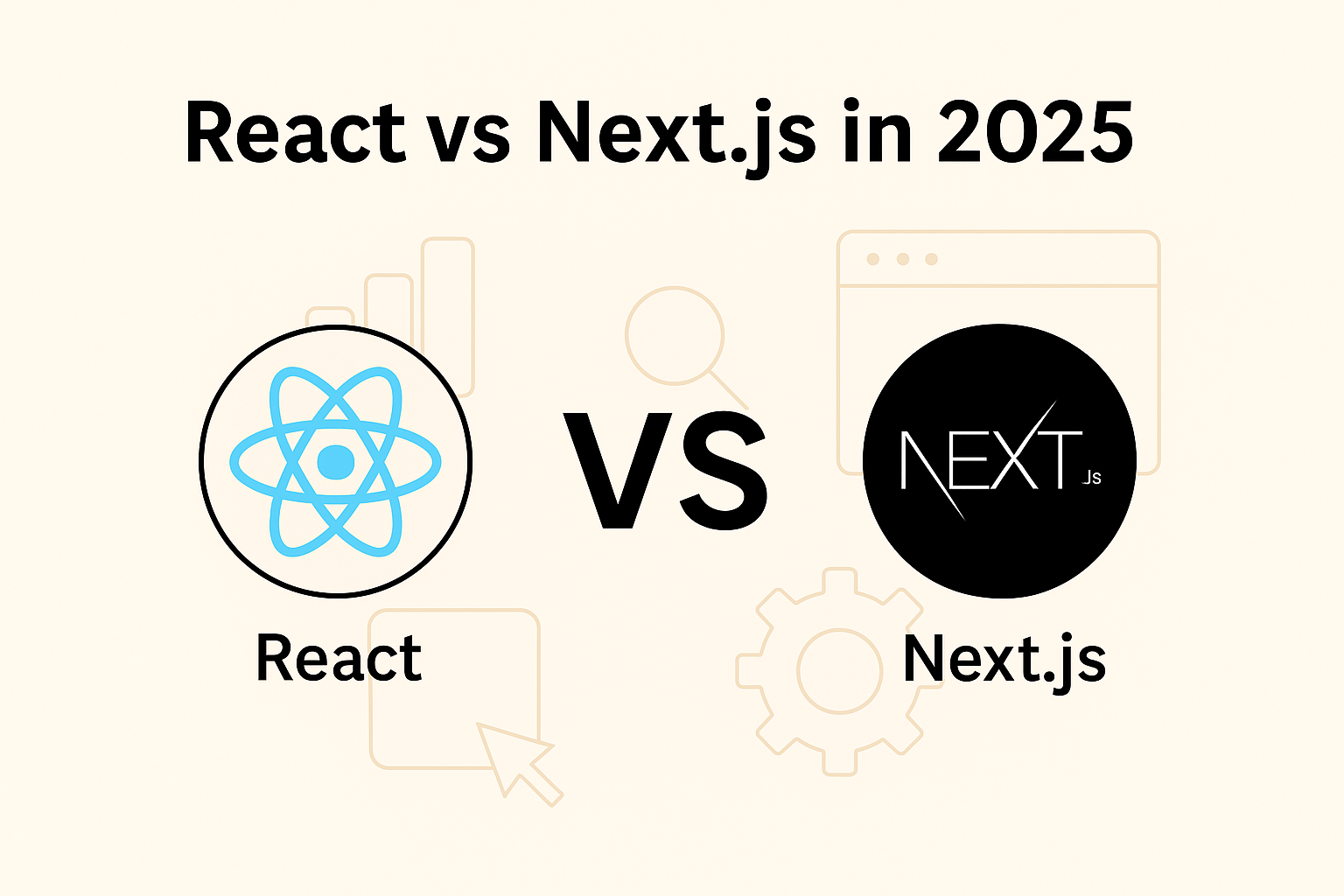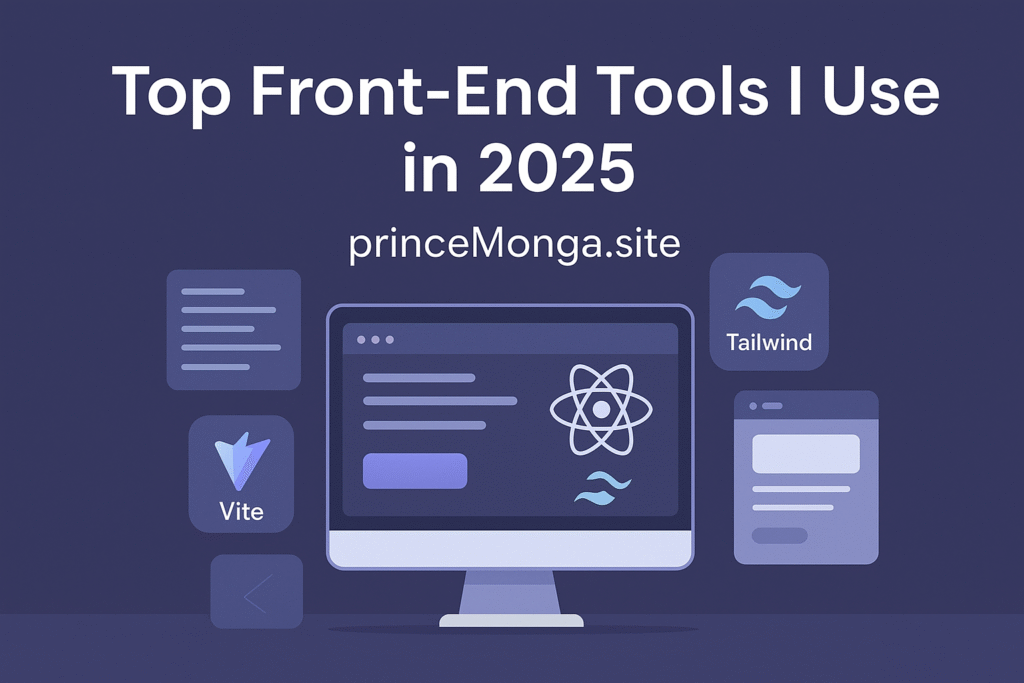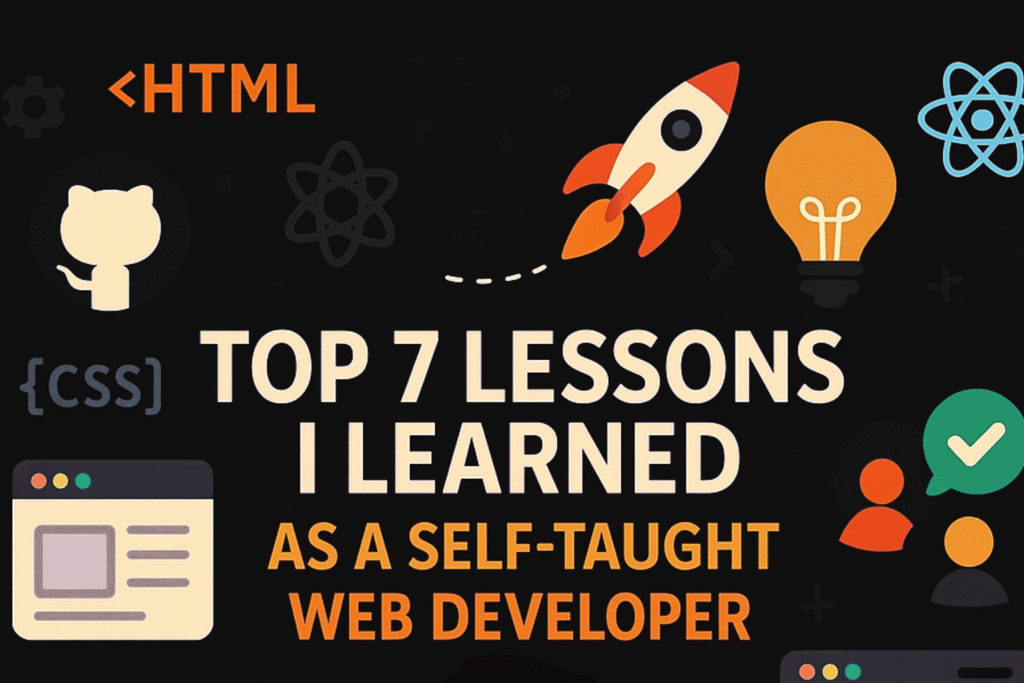React vs Next.js in 2025: Which One Should You Use?
React vs Next.js in 2025: Which is the Best Framework for Web Development? Introduction Briefly explain how React and Next.js have shaped modern web development. Mention the significance of 2025: increasing demand for performance, SEO, and DX (Developer Experience). End intro with: “Let’s break down the differences and help you decide which tool suits your project in 2025.” 1. What is React? React is a JavaScript library for building user interfaces, developed by Facebook. Key features in 2025: React Server Components (RSC) Concurrent rendering with React 18+ Use of frameworks like Vite and Turbopack for bundling 2. What is Next.js? Next.js is a React framework developed by Vercel for production-ready apps. Key features in 2025: App Router (with Server and Client components) Built-in SEO, image optimization, file-based routing Middleware, Edge functions, ISR (Incremental Static Regeneration) 🆚 3. React vs Next.js: Key Differences in 2025 Feature React Next.js Type Library Framework Routing Manual (React Router) Built-in file-based routing Rendering Methods CSR (default) SSR, SSG, ISR, CSR SEO Support Limited Excellent (Server-side capable) Performance Optimization Manual Built-in optimizations Hosting Any platform Optimized for Vercel (but flexible) Learning Curve Lower Slightly higher due to features Use Case SPAs, small to medium apps Large-scale, SEO-focused apps 4. When to Choose React in 2025 You want full control over your architecture. Building a Single Page Application (SPA) without SEO concerns. Using third-party backend or APIs with full customization. Lightweight projects with fewer routing/optimization needs. 5. When to Choose Next.js in 2025 Need SEO, server-side rendering (SSR), or static generation. Building eCommerce, blogs, landing pages. Want faster time-to-market with built-in tools. Using Edge functions, internationalization (i18n), or middleware. 6. Developer Experience in 2025 React: Flexible, but you set up everything. Next.js: More opinionated, but smoother experience with: Zero-config setup API routes Built-in CSS/SASS support Server/client component separation 7. Performance & Scalability Next.js outperforms vanilla React in: Initial load (with pre-rendering) Code splitting & lazy loading Image and font optimizationReact needs third-party support or manual setup to achieve similar results. 8. Ecosystem & Community (2025 Outlook) React has a vast community and library support. Next.js has grown tremendously with strong Vercel backing. Both support modern tools: TypeScript, Tailwind, SWR, Zustand, etc. Conclusion: React or Next.js — What’s Better in 2025? Use React if you need flexibility for custom SPAs. Use Next.js if you want performance, SEO, and faster development. Final tip: “React is the foundation, Next.js is the fast-track highway.” All Posts AI & Tech News Blog & Career Talks Code & Development DevOps & System Tools My Life & Thoughts Real-World & Randoms Study & Learning Zone React vs Next.js in 2025: Which One Should You Use? React vs Next.js in 2025: Which is the Best Framework for Web Development? ✨ Introduction Briefly explain how React and… Read More Top Front-End Tools I Use in 2025 – Essential Front-End Kit Top Front-End Tools I Use in 2025 1. Vite – The Superfast Build Tool Vite has completely transformed the way… Read More Coding Under Blackout: India vs Pakistan War Threats Coding Under Blackout: My Tech Journey Amid India vs Pakistan War Threats The night was pitch black—Sirsa city plunged into… Read More Load More End of Content.







